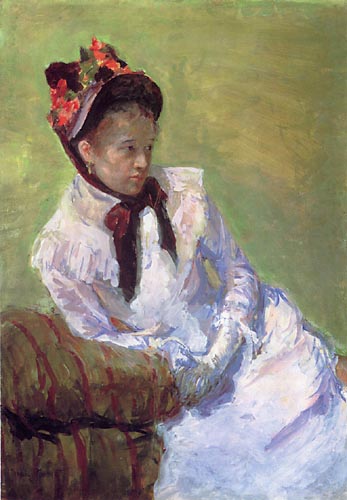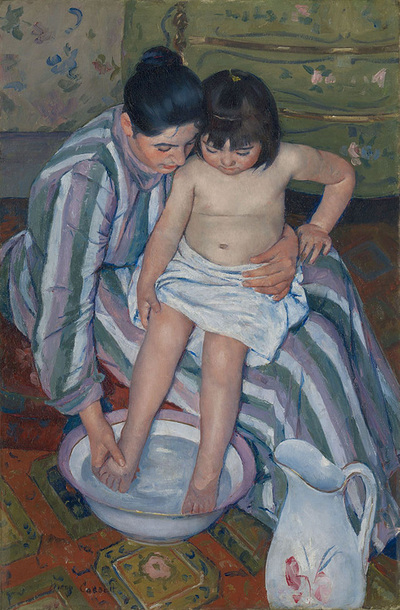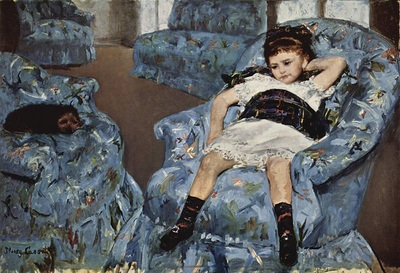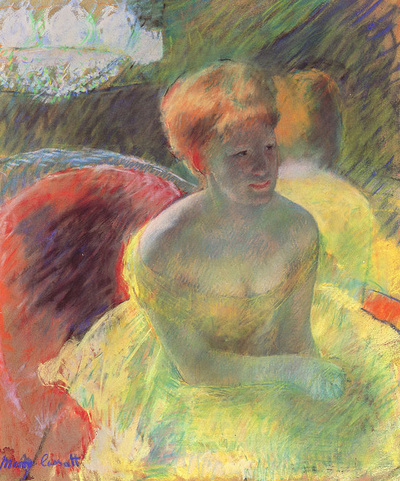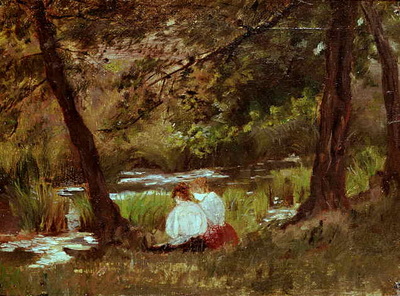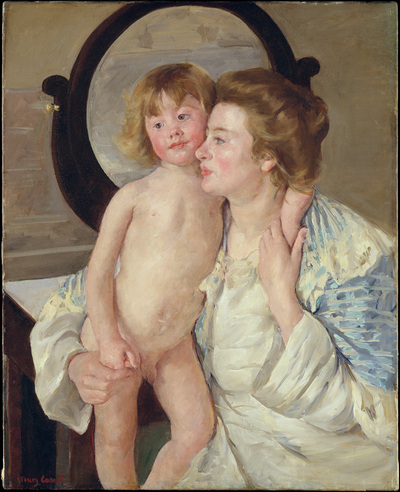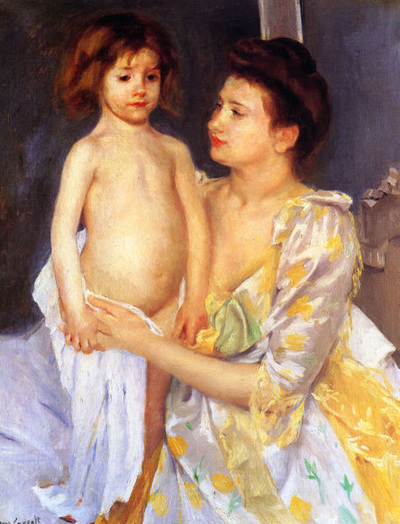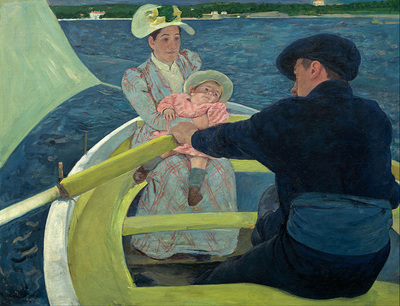MARY CASSATT 1844 - 1926
Mary Cassatt was born in Allegheny City, Pennsylvania, USA. She spent her early years in France and Germany. At the age of 15 she already began studying at the Academy of the Fine Arts in Philadelphia, and even the Civil War could not deter her from her studies. Mary Cassatt moved to Paris several years later, supported by her mother and friends of the family. Since women were not granted access to the École des Beaux-Arts, she took private classes. She also viewed the old masters in particular as worthy learning material—she traveled through the cities of Europe, visited their museums, and studied the originals. In 1868 she participates in the Paris Salon for the first time. At first the widespread avantgarde spirit in the arts in France at the time, spearheaded by artists like Manet and Courbet, had scant influence on Cassatt’s work—she maintained a more traditional style and showed work at the exhibitions of the Paris Salon regularly in the following years. In 1870 she returned to the USA for a stint. She wished to live as a painter, but also to build up a financially independent existence. Despite the acknowledgment of her work by the New York art scene, she was not able to make a living off of painting, and gave up on it for a while. Cassatt was dissatisfied with the conservative selection politics of the Paris Salon jury, and openly criticized the under-representation of female artists who did not posess the corresponding recommendations of male colleagues. In 1877 she was invited by Edgar Degas to join an artist group—they would later become the impressionists. In the following years, Degas became her mentor and close friend, with a significant influence on her style—she developed her technique further in dialogue with him, experimenting with her use of light and color. While subject to the prevalent critique of the impressionists of the time—that of technical crudity—her works are of a vibrant ease, conveying intimacy and closeness at the same time. At the same time it is apparent that the atmospheric paintings are devoid of any sentimentality, instead rich with dense, evocative moods. Cassat continued to develop her style during her entire professional life, and is primarily famous for her mother and child scenes. In America she only became well-known after her death, today her work is part of numerous collections. Anne Cathrin Ulikowski Translated by Zoë Claire Miller Scroll down for German version Sources: http://www.marycassatt.org/biography.html http://www.metmuseum.org/toah/hd/cast/hd_cast.htm Mary Cassatt. Columbia Electronic Encyclopedia, 6th Edition Literary Reference Center Segard, A., Un paintre des enfants et des mères, Mary Cassatt. |
MARY CASSATT 1844 - 1926
Mary Cassatt wurde in Allegheny City, Pennsylvania, USA, geboren. Ihre frühen Jahre verbrachte sie in Frankreich und Deutschland. Bereits mit 15 Jahren begann sie ein Studium an der Academy of the Fine Arts in Philadelphia und ließ sich auch nicht durch den amerikanischen Bürgerkrieg von ihren Studien abhalten. Mary Cassatt zog einige Jahre später nach Paris, unterstützt von ihrer Mutter und durch Freunde der Familie. Da Frauen an der École des Beaux-Arts nicht studieren durften, nahm sie Privatunterricht. Zudem betrachtete sie vor allem die alten Meister als eine taugliche Schule – sie reiste durch Europas Städte, ging in die Museen und lernte dort am Original. 1868 nimmt sie das erste Mal am Pariser Salon teil. Die allgemeine künstlerische Aufbruchsstimmung im Frankreich jener Zeit, angeführt von Künstlern wie Manet und Courbet, hatte zunächst wenig Einfluss auf Cassatts Arbeiten - sie behielt einen traditionelleren Stil bei und war in den folgenden Jahren regelmäßig in den Ausstellungen des Pariser Salon vertreten. 1870 kehrt sie zunächst in die USA zurück. Ihr Wunsch war es, als Malerin leben zu können, aber auch, eine unabhängige Existenz aufzubauen. Trotz der Anerkennung ihrer Arbeiten in der New Yorker Kunstszene gelang es ihr nicht, ihr Leben von der Malerei zu bestreiten und sie gab sie für eine Weile auf. Cassatt ist unzufrieden mit der konservativen Auswahlpolitik der Jury des Pariser Salons und kritisiert offen die geringe Berücksichtigung weiblicher Künstlerinnen, wenn diese nicht über entsprechende Empfehlungen männlicher Kollegen verfügen. 1877 wird sie von Edgar Degas zu einer Künstlergruppe eingeladen - den späteren Impressionisten. In den folgenden Jahren wird Degas zu ihrem Mentor und engem Freund, welcher großen Einfluss auf ihren Stil hat– im Austausch mit ihm entwickelte sie ihre Technik weiter und experimentierte im Umgang mit Licht und Farbe. Der allgemeinen damaligen Kritik der Impressionisten technischer Unfertigkeit ausgesetzt, sind ihre Arbeiten von einer lebendigen Leichtigkeit geprägt, die gleichzeitig Intimität und Nähe vermitteln. Zugleich fällt auf, dass die stimmungsvollen Bilder jegliche Sentimentalität zu meiden wissen und von dichter atmosphärischer Stimmung sind. Cassatt entwickelte ihren Stil ihr gesamtes Arbeitsleben weiter und ist vor allem bekannt für ihre Mutter-Kind Szenen. In Amerika wird sie erst nach ihrem Tod bekannt und ist heute in zahlreichen Sammlungen vertreten. Anne Cathrin Ulikowski Quellen: http://www.marycassatt.org/biography.html http://www.metmuseum.org/toah/hd/cast/hd_cast.htm Mary Cassatt. Columbia Electronic Encyclopedia, 6th Edition Literary Reference Center Segard, A., Un paintre des enfants et des mères, Mary Cassatt. |
